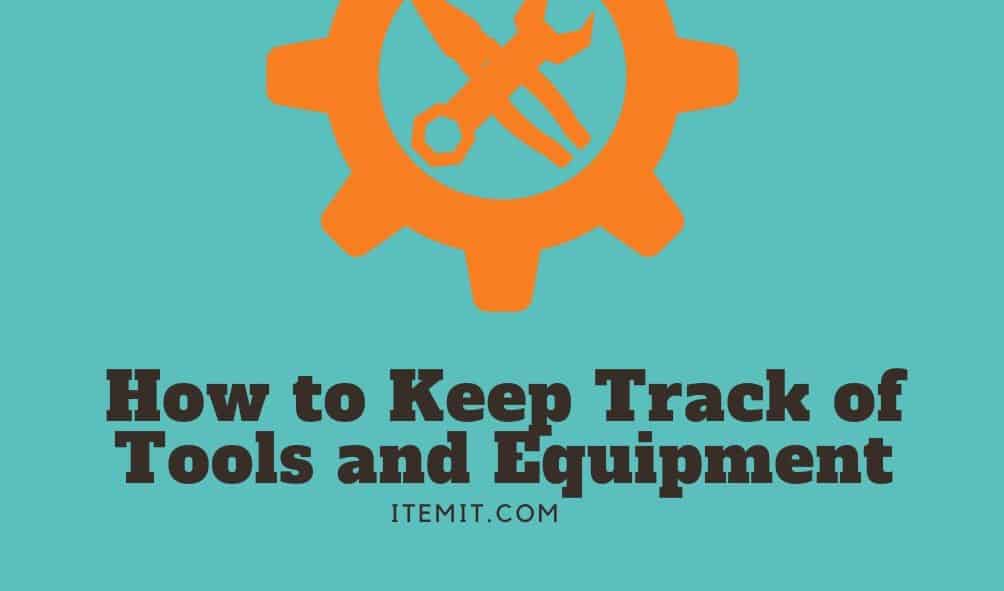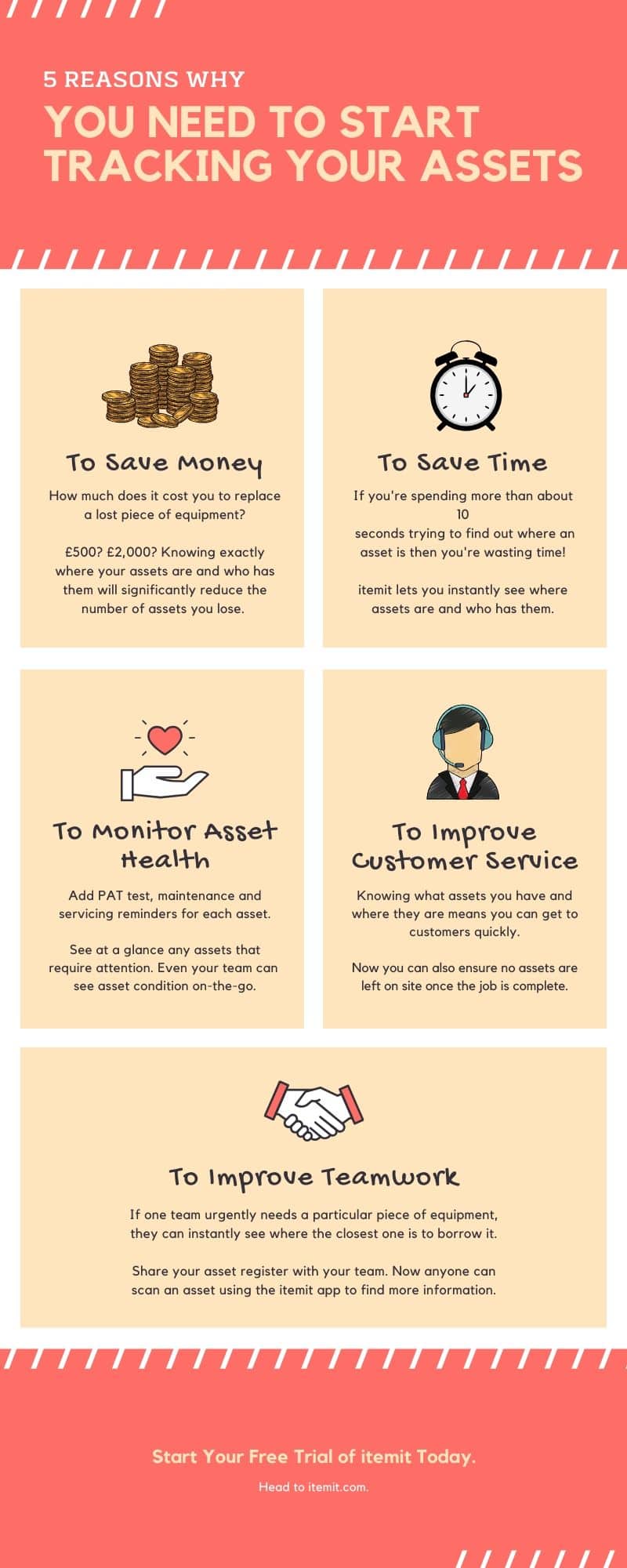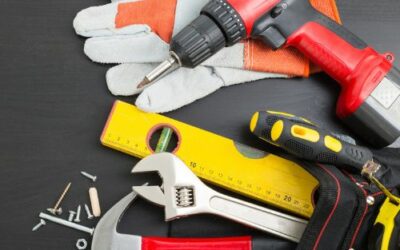
If you work in construction, landscape gardening, or provide electrical or engineering, you’ll have plenty of tools and equipment to keep track of.
By now, you’re probably sick of out of date spreadsheets clogging up your laptop which still allow for your tools and equipment to be lost.
So, how do you improve your tools tracking processes?
With an effective asset management system for tools tracking, you’ll be able to gain greater accountability over your tools and lose fewer of them. You’ll also be able to add crucial maintenance and accounting information.
How do you use a tools tracking system to keep on top of things? We’ve condensed it to four easy steps.
Step One: Identify
Firstly, identify your assets. If you already have an asset register in the form of a spreadsheet, this might be easier. However, make sure you’re not overly reliant on a spreadsheet, as there is a risk of missing out on ghost assets.
Step Two: Tag
Next, you’ll need to tag your assets. Each asset you’re tagging might require a different tag.
For example, if it’s IT equipment, such as a laptop, a generic vinyl sticker QR tag will be fine. If it’s a piece of equipment that is put under a lot more stress, however, you’ll be able to use anodised aluminium QR tags with a stronger adhesive. For even heavier-duty equipment, you can use larger metal tags.
In fact, QR code asset tags are customisable to your tools tracking needs. It’s possible to use iron-on tags, waterproof tags, or even tiny QRs depending on what you need them for.
You’ll also be able to use RFID tags, but these will require a separate RFID reader, whereas QR tags only need a smartphone to get underway.
Once you’ve stuck your asset tags onto your tools, you’ll be able to add them to your assets’ digital profile. This way, you’ll only need to scan an asset’s tag to update its location and record the user who scanned it.
Step Three: Spread the word
The next step is to let your team know why you’re using new tools tracking software and how they should use it. It’s essential to share with your team what caused you to need to use the new system and how it will benefit the company moving forward and for you to closely manage this period of change.
The best tools tracking software will have an easy to use user interface, meaning that it won’t take long to help your team pick it up. You should also be able to share tutorial videos with your team to get them up to speed much faster.
Step Four: Use!
The easiest step is just to use your new tools tracking software!
Now that all of your assets are tagged up and in an asset tracking system, you’re ready. Your team will all be able to manage and interact with your assets collaboratively.
You’ll no longer need to trust word of mouth with what’s going on with which asset. All a user needs to do is scan an asset and update or add any relevant information.

How can you use Tools Tracking Software?
So, what are the many ways you can use tools tracking software?
If your staff need to take and use tools and equipment from your storeroom, you’ll be able to use tools tracking software to scan any assets being taken out or returned and update the asset’s booking or check-in/out information.
You’ll be able to build location hierarchies so that you can see exactly where your tools are onsite. That way, if you’re looking for something specific, you’ll have a much more streamlined process to find it.
When tools are being transported, you’ll be able to use collections or locations to see which van it’s in or use a quick-add feature to move assets between vans or record when they’ve been delivered to a job.
QR code asset tags will also deter thieves, as ours proudly state that your tools are tracked by itemit.
Tracking IT Assets, too!
You can do all of this with your IT assets as well!
Using collections and bookings, you’ll be able to assign each member of staff laptops or phones.
With a better IT asset management audit trail, you’ll gain a higher level of accountability and ensure GDPR compliance.
Whether it’s laptops, phones, USB sticks, or more, you’ll be able to use an asset management system to know that everything is exactly where it needs to be.
Choose itemit as your Tools Tracking Software
itemit can help you with more than just your tools tracking.
Using itemit means that you get a high return on investment while improving the scalability of your business. With itemit, your customer service can be improved as well as your efficiency as you’ll save bucket-loads of time.
Find out more by contacting us or by filling in the form below. You can even ask us for some free sample tags which we’ll send out first-class on the day!

Try itemit
Choose a better way to track
your assets.
Start your free 14-day trial now!

Keep Learning
itemit Blog
Tips, guides, industry best practices, and news.
Why Your Library Needs Asset Tracking Software
Your library needs a tracking system so you know where your inventory is all of the time. Discover why an RFID asset tracking system is ideal!
How To Switch To Asset Tracking Software
Have more than a few assets and want to have more control over them? Read this post to find out how asset tracking software can help!
Tool Maintenance Made Easy
Would you like to keep your tools in a better condition? read this post now to find out how using pre-emptive maintenance can help!

